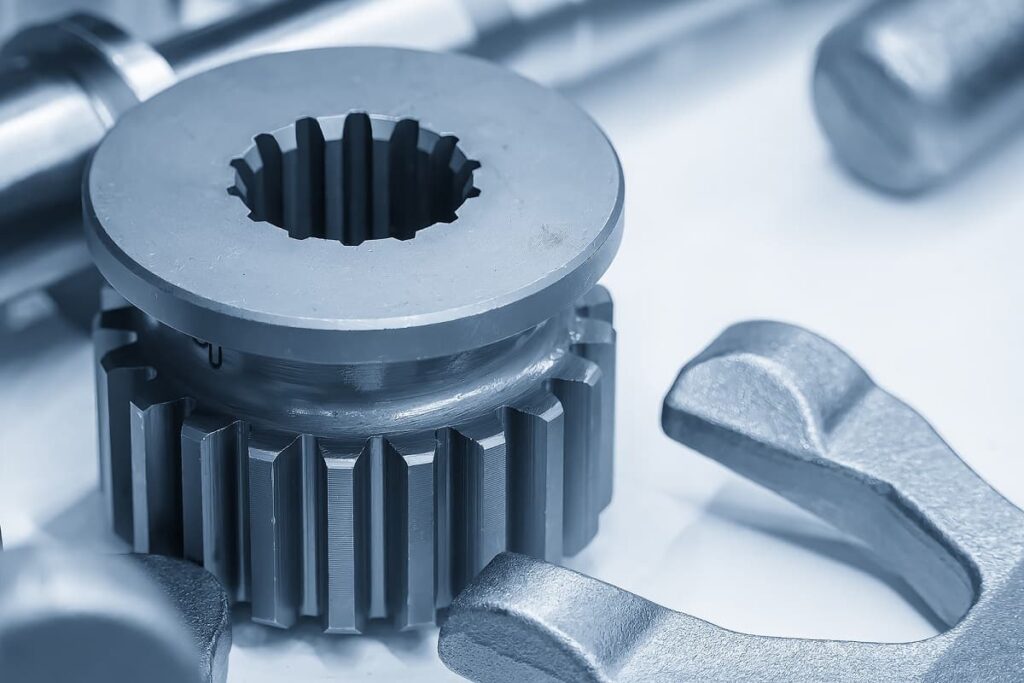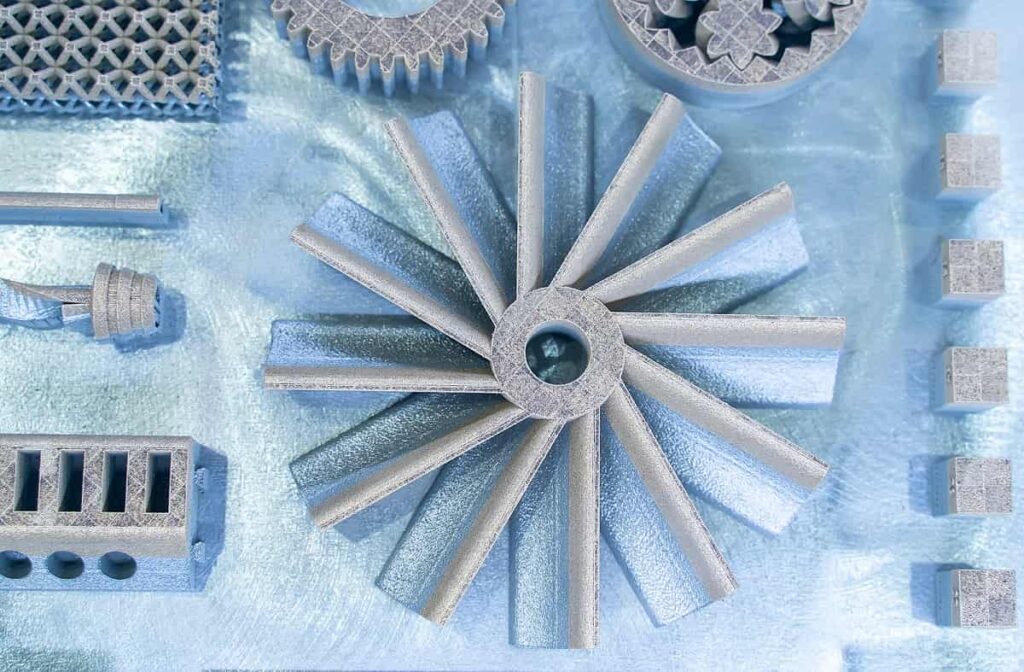Trio of 3D Printing Startups Join Unicorn Club
Table of contents

Things achieve value based on a variety of factors, rarity being one. The rarer something is, ergo, the more valuable or unique it becomes, whether we’re talking about a 50-year-old Scotch or a Def Leppard fan under the age of 45. In other words, rarity isn’t always about price but prestige and exclusivity. We talked before about the once-exclusive Unicorn Club, so-named because membership required a startup to be valued at $1 billion or higher to join. Five years ago, when the term came into vogue, there were fewer than 40 such creatures. Now the count is anywhere from 260 via CB Insights up to 359, as counted by Crunchbase. This year alone, as of Aug. 9, there are 65 new companies with $1 billion-plus valuations, according to CrunchBase, compared to 82 in 2017. This year’s class includes a still-rare 3D printing startup.

Founded in 2011, Formlabs crossed the line at the beginning of this month on the back of a modest $15 million round, bringing total disclosed funding to an equally modest $103.7 million. That much money might not sound modest to a starving MBA, but it’s pocket change in today’s Monopoly-money VC world where there have already been 268 mega-rounds ($100 million or more in a single round of fundraising) in the first seven months of this year. Last year, there were 273 mega-rounds, including the only two other 3D printing startups—Carbon and Desktop Metal.

While Formlabs reached the Unicorn Club with a much smaller warchest than either company (and we talk more about the significance of that below), Carbon got there in a lot less time reaching Unicorn status after their Series C raise in 2015. Carbon has since raised a $200 million Series D, boosting its total funding to $422 million, about four years after it was founded in 2013. Then came Boston area company Desktop Metal, a startup that reached Unicorn status less than two years after it was founded in October 2015 – a $1 billion valuation followed a $115 million Series D in July 2017. The company added another $65 million Series E in March, locking up a total of $276.8 million.
GE Needs to 3D Print New Business Model
Before we jump into the nuts and bolts of each 3D printing startup, let’s first take a look at what they all have in common: General Electric (NYSE:GE). You may recall that last year we did a deep dive into GE’s investments into 3D printing, particularly for 3D printing metals. As we reported, GE has spent billions on acquisitions for additive manufacturing companies. In 2016, it created a subsidiary, GE Additive, dedicated to the industry, and is reportedly building the world’s largest additive machine for 3D printing metal. (Not sure how that will stack up to NewSpace startups 3D printing entire rockets.) Additive machines, or 3D printers, fuse together fine layers of materials—powdered metal, in the case of metal printers—in successive layers to create three-dimensional objects directly from a computer file.

GE has continued to hedge its bet on 3D printing by directly backing Carbon and Desktop Metal, participating in two rounds for each startup. In addition, Former GE CEO Jeff Immelt is a venture partner at New Enterprise Associates (NEA), which led the most recent round for Formlabs. As part of the deal, Immelt will take a seat on Formlabs’ board of directors. He also has a spot on the board at Desktop Metal, thanks to NEA’s participation in two rounds of funding there as well. Immelt is obviously the link between GE and 3D printing startups. That could be a good thing or a bad thing, depending on your perspective. Obviously, having the former CEO of a company like GE in your corner can’t be understated. Of course, this is the same CEO who over the course of 16 years saw the company’s stock value drop -34%. Fortune does an excellent deep dive into GE’s meltdown and Immelt’s missteps that helped lead to the shedding of about $100 billion in value over the last 18 months.
3D Printer Stocks Still Not a Great Investment
One line from the article especially piqued our interest: “Immelt followed fads, [analysts and observers say], paying top dollar to acquire the hot businesses of the moment.” That brings us back to 3D printing, which as an emerging industry has struggled to meet expectations. Surprisingly, our Motif 3D Printing Stocks fund, made up of five 3D printing companies, has actually surged, returning +18.7% over the last year. However, you still would have been wiser to invest in an index fund that follows the NASDAQ, which has been up about +25% over the last year. Over the long term, pretty much all of the major 3D printing public companies continue to be in the red. And you definitely didn’t want to throw money away on a company like Israeli-based Nano Dimension (NASDAQ:DDNM), which has completely tanked.
Now that we understand a bit more about the risks of 3D printing stocks, let’s take a look at our 3D printing startups in the Unicorn Club and see if a better future is ahead.
Formlabs is Latest 3D Printing Startup to Join Unicorn Club
Let’s start with our newest 3D printing startup unicorn, Formlabs, which was founded by three MIT graduates and is located in the suburbs of Boston. The company produced its first 3D printer, targeted for professionals, with a successful Kickstarter campaign that raised $3 million in 2012. Today, Formlabs has more than 500 employees, a revenue run rate above $100 million, and it claims to be the world’s largest seller of stereolithography 3D printers worldwide, according to Forbes. It has about 20 investors, many of whom have participated in more than one round. The list is pretty diverse, with firms from China and Israel to Silicon Valley and Boulder, Colorado. Its customer list is also long and even more impressive, with names like Google, Ford, and Boeing.
The company continues to serve a more niche market for professionals who need to 3D print complex projects, such as molds for robotic hands that may need to be continuously improved throughout the manufacturing process. One of the uses of its Form 2 3D desktop printer (seen above) is to create various products for the dental industry, including 3D-printed dentures. Over the last six years, Formlabs told Forbes it has sold more than 35,000 printers. The company is also taking pre-orders for its industrial 3D printer, Fuse 1, which can print flexible nylon parts through a process called laser sintering, where a laser melts very fine plastic powder into various shapes. The price tag is $9,999—about a tenth of what similar machines currently sell for. Fuse 1 is expected to start shipping next year, and looks to be a game-changer. Formlabs is obviously making money, though it’s unclear if it’s actually turning a profit, but you have to like the results so far, which apparently figures into the company’s billion-dollar valuation with a relatively small amount of invested capital.
Carbon is the Most Well-Funded and Valuable 3D Printing Startup
As we noted earlier, Carbon is the most well-funded of the trio, topping our 2017 list of 3D printing startups, and also the first 3D printing startup to achieve a valuation exceeding $1 billion. Thanks to its most recent valuation of $1.7 billion, it is also the most valuable of the group as well. In addition to GE, Carbon counts some pretty high-profile names among its investors, including Sequoia, Johnson & Johnson, Fidelity, BMW, Nikon, and Google. It gained quite a bit of press last year when news broke that its 3D technology was being used to produce midsoles for Adidas footwear.

The company’s secret to success is speed, claiming its Digital Light Synthesis is 10 times faster than traditional additive manufacturing methods. The system most resembles a 3D technique called stereolithography, which uses UV lasers to draw and cure parts out of various materials. Carbon’s twist on the process involves a window at the bottom of the machine that is permeable to oxygen, Chemical and Engineering News explains. Why is that important? There’s a technical explanation or we can give you the easy answer: It helps make it print continuously, speeding up the process so manufacturers can produce at scale, like over-priced running shoes for Adidas.
Update 06/25/2019: Carbon has raised $260 million in growth funding for expanding to new markets and accelerating R&D efforts. This brings the company’s total funding to $682 million to date.
Desktop Metal is the First 3D Printing Startup Unicorn
Last but not least is Desktop Metal. The company has also assembled a list of impressive investors aside from GE and NEA, which has been around for more than 40 years with nearly $20 billion in cumulative capital. Other notable backers (many of which have participated in multiple rounds) include Ford, Kleiner Perkins, Lux Capital, Lowe’s, Google, BMW and even another 3D printing company, Stratasys (NASDAQ:SSYS). Naturally, it also made our list of top-funded 3D printing startups in 2017. It also doesn’t hurt that co-founder Ely Sachs was one of the inventors of 3D printing while at MIT in the late 1980s.

Desktop Metal has been laboring on two printers, one for the office and a second for industrial production. The former is called Studio, an office-friendly metal 3D printing system that works by extruding rods of bound metal rather than using metal powder. The parts are sintered in a furnace that employs silicon heating elements with high-powered microwaves. The big daddy is the Production system, which employs a technology called Single Pass Jetting, a bi-directional 3D printing technique that employs more than 32,000 jets that work in conjunction with powder spreaders to spread powder and print in a single quick pass across the build area, jetting millions of droplets per second. The Production system claims to be 100 times faster than other 3D metal printers but at 20 times lower cost. It should show up sometime in 2019.
Update 01/23/2019: Desktop Metal has raised $160 million in Series E funding led by Koch Disruptive Technologies. This brings the company’s total funding to $436.8 million to date. Combined with the previous rounds since its inception in 2015, this marks the largest total funding for any private 3D printing company to date.
Conclusion
The new generation of 3D printing startups appear to be offering some real innovative technology, particularly in the area of mass production. While it might be fun to sit at home and print off smartphone covers, real-world applications to produce things like aircraft engines with a lot fewer moving parts that can break would be a real game-changer if it can be done at scale. No word on whether any of these unicorns are headed for an exit any time soon, but with the possible break-up of GE (as some have speculated), an acquisition by (or of) its additive manufacturing division could make things interesting in the near future.
Sign up to our newsletter to get more of our great research delivered straight to your inbox!
Nanalyze Weekly includes useful insights written by our team of underpaid MBAs, research on new disruptive technology stocks flying under the radar, and summaries of our recent research. Always 100% free.














